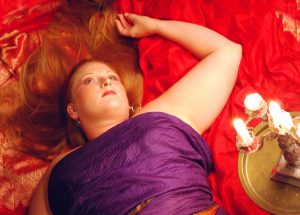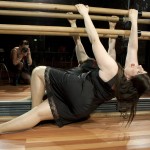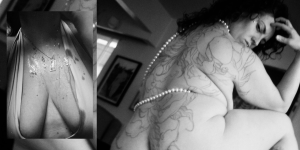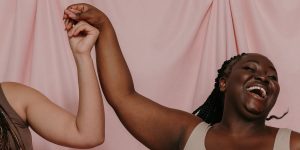Nature worship & fat liberation: Q&A with Shoog McDaniel
By: Maeve Marsden
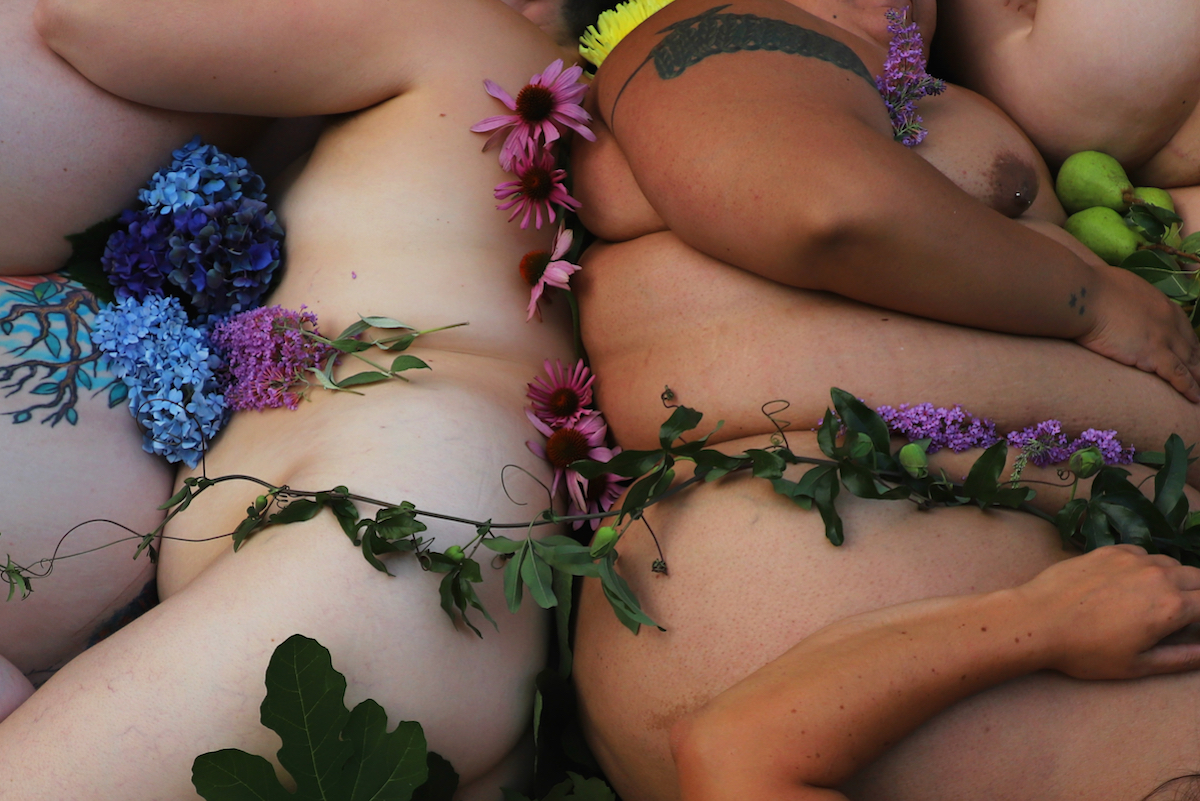
Shoog McDaniel is a fat, queer, Floridian freak who has been creating art in the swamps since early age. They are inspired by Florida flora and fauna and the beautiful fatties they photograph. They love colour and patterns and creating alternative worlds to escape the one they’re in. They are a photographer by trade and themes of nature worship and fat liberation can be seen throughout their work.
In this interview, originally published in Archer Magazine #14, the GROWING UP issue, they talk to Maeve Marsden.
Maeve Marsden: Your work explores intimacy, often quite literally with subjects touching, leaning on each other, cuddling and kissing. What does it mean for you as an artist, that around the world that sort of physical connection is being curtailed due to COVID-19 restrictions?
Shoog McDaniel: At first it felt really devastating because it felt like an end to a chapter in my work and the healing I want to provide people. The central purpose of my work is to provide people love and comfort through my images; people experience the intimacy I capture through engaging with the work.
However, after that initial period of grief, I’ve tried to transform my practice to adapt to the current circumstances. I’m staying curious about the possibilities of our new situation. I’m investigating this through Zoom photoshoots and continuing to post images that show the kind of intimacy that I believe is really healing for my community to see.
I fear that some people may be triggered by those images due to being cut off from that kind of intimacy from isolation, but I really believe it is so valuable to show people we will get back to that.
All images: Shoog McDaniel
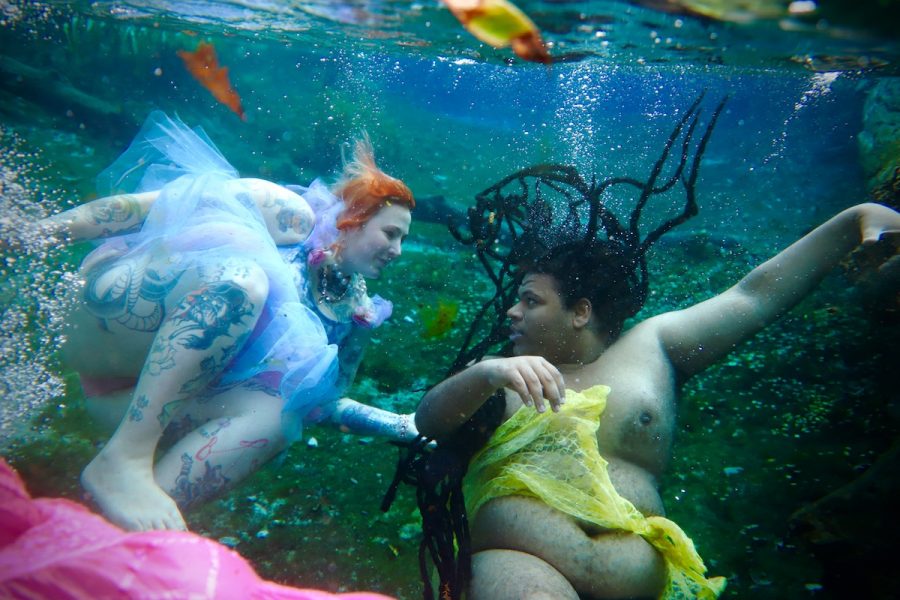

MM: It’s really frightening to see the pandemic play out in the USA, and many of us are worried for our friends and allies there. Can you tell me how it’s impacting you?
SM: It’s impacting people in all different ways but overall it feels like we are all on an emotional roller-coaster. It is really hard to feel grounded without knowing what is going to happen tomorrow. Our leadership is trying to send us into the ground; it feels like the country is being run by a maniac.
Things feel uncertain and unstable but at the same time there is a lot of resiliency and transformation and a lot of underground networks that are popping up: dance parties, artist talks, social-distance walks with friends. Most of all I am seeing a really beautiful resurgence of folks reconnecting to nature right now (I have literally been hugging trees with my friends!).
MM: What role do you see for artists in times of turmoil? I feel there’s a lot of pressure on us to still be creating right now, when the world is upside down. Do you feel that pressure or are you taking time out to observe and reflect?
SM: The first month, I felt a strong pressure to respond and comfort people through my work. I had to realise that it is true – I will create art about this – but it doesn’t have to be right now. This past week I came back from a big slump artistically and am feeling inspired as I begin investigating different methods of creating and disseminating my work.
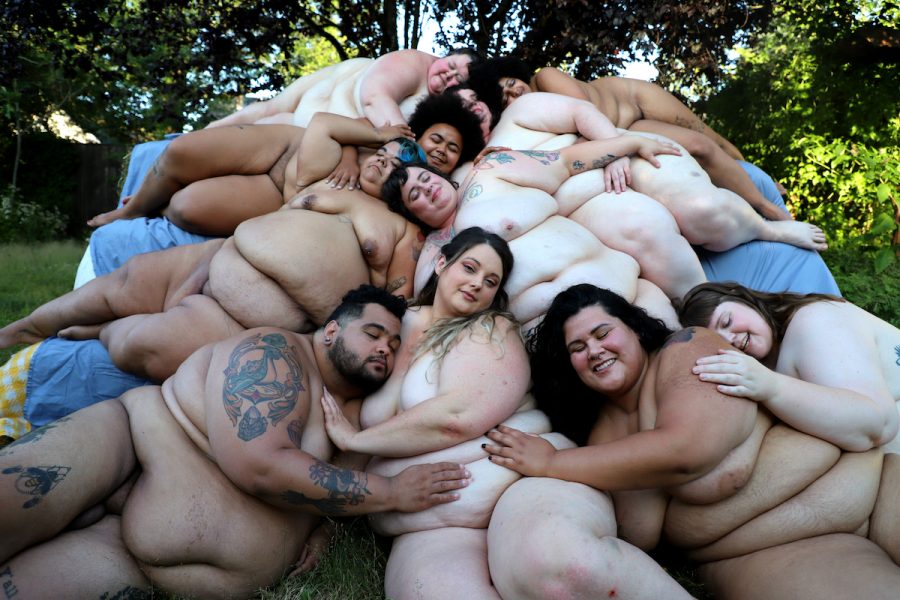
MM: I love your story about getting into photography after your friend dumpster-dove a bunch of disposable cameras behind Walgreens. What takes you from disposable camera to professional photographer?
SM: Getting a smartphone was the big turning point for me. I had a couple of manual cameras before that point but they were stolen. In 2011, I got my first smartphone and started taking pictures and putting them on Instagram. Now I work with a Canon Rebel.
MM: Your images exploring fat bodies place them/us in nature in really beautiful ways. So often, imagery of fat people is framed as a ‘before’ photo, as something unnatural. Tell me about your process for creating these stunning images. How do you approach the composition?
SM: The composition comes naturally to me. I take a lot of photos at a photoshoot; I have people move in lots of different ways and be in different sections of the photos. I work with nature to complement my models’ bodies and movements. I’m always seeking to naturalise fatness and I try to find the way to best utilise nature within the composition of my photos to do so.

SM: Many of your images are nudes, and tend to include people who aren’t encouraged to celebrate their nakedness. What work do you have to do as an artist to make them feel safe, to ensure they are supported to be part of a nude shoot?
MM: People come to me for a shoot, so it is that person’s idea. My process of making them feel safe involves going slowly, connecting with them first, and then talking them through it. In order to help people get used to the idea of a photoshoot, we don’t jump right in.
I like to connect on some level and figure out the vibe and what they are interested in getting out of the shoot. We start slowly – they don’t take off all their clothes right off the bat. It is important to me that they only get naked to the point where they are comfortable
SM: Most of us are taught growing up that non-normative bodies are abject. When and how did you come to view fatness as beautiful?
I struggled with finding myself beautiful my whole life. I definitely dabbled in fat activism in my 20s and had ideas that liberation was possible, but I never felt truly comfortable with my body until I started taking pictures of other fat bodies.
The first time I ever did a photoshoot was with a friend. It was their idea to get nude, and I was taken aback at how beautiful fat bodies are, especially when juxtaposed with nature. The dichotomy between nature and fatness – the added amount of texture and vastness when a fat body was placed among a natural space – helped me understand the beauty of fat bodies.


MM: You’ve written about the intersections of fatphobia with other forms of discrimination, such as racism and ableism. How do you express these ideas through your work?
SM: Through representation. I try pretty hard to highlight different kinds of bodies. I work within people’s means. For booking photoshoots I do a sliding scale for BIPOC (Black, Indigenous and People of Colour) and trans women starting at $0. Accessibility for people that face intersecting marginalisation like that is really important, so they can access the kind of healing I try to provide through my work. I make sure when I post on my social media I’m thinking about who I am representing: a variety of genders, body shapes and ethnicities.
MM: What is your approach to post-production? Considering what you are trying to express about the natural beauty of diverse human forms, does this impact how much processing or touching up you do?
SM: It really does – I don’t edit. Some people get frustrated by that. I’m not a bourgeois photographer; it is all very raw. I zoom in on the stuff other photographers typically try to photoshop away. That lies at the heart of my work, and the mission of fat liberation.
MM: What has been your favourite shoot of all time? Do you feel most proud of process or result?
SM: There are a few models I have worked with consistently over the years. My underwater shots with my collaborator Matias are probably my absolute favourites because Matias understands exactly what I need (and their long hair looks magical underwater).
I also did a really fun group shoot last summer where we did a fat naked pyramid with a group in Portland, Oregon. I’m most proud of both process and result; they are interwoven for me.
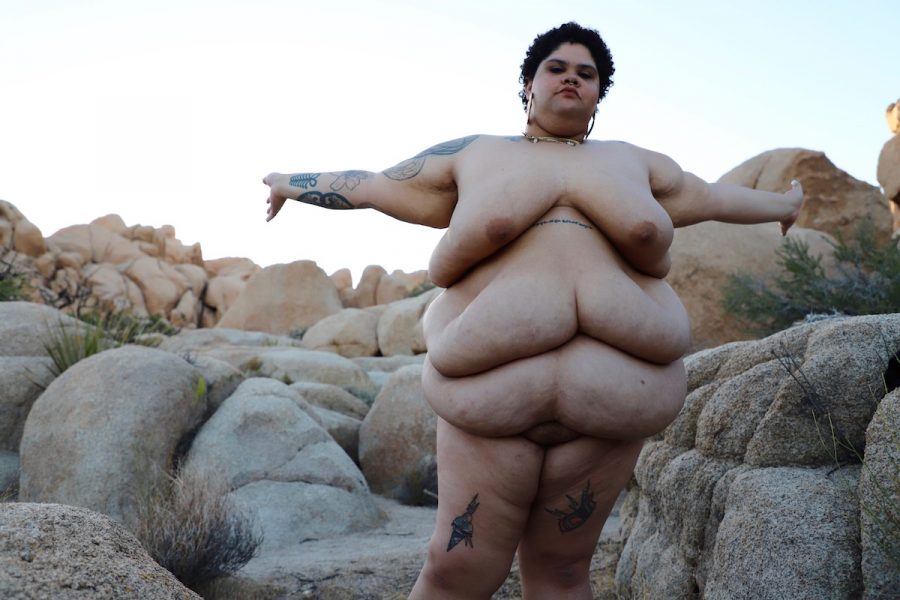
This article first appeared in Archer Magazine #14, the GROWING UP issue.
Maeve Marsden is a writer, producer, performer and theatre maker, curator of national storytelling project Queerstories, and a member of Belvoir Theatre’s Early Career Playwright’s Lab 2020.







